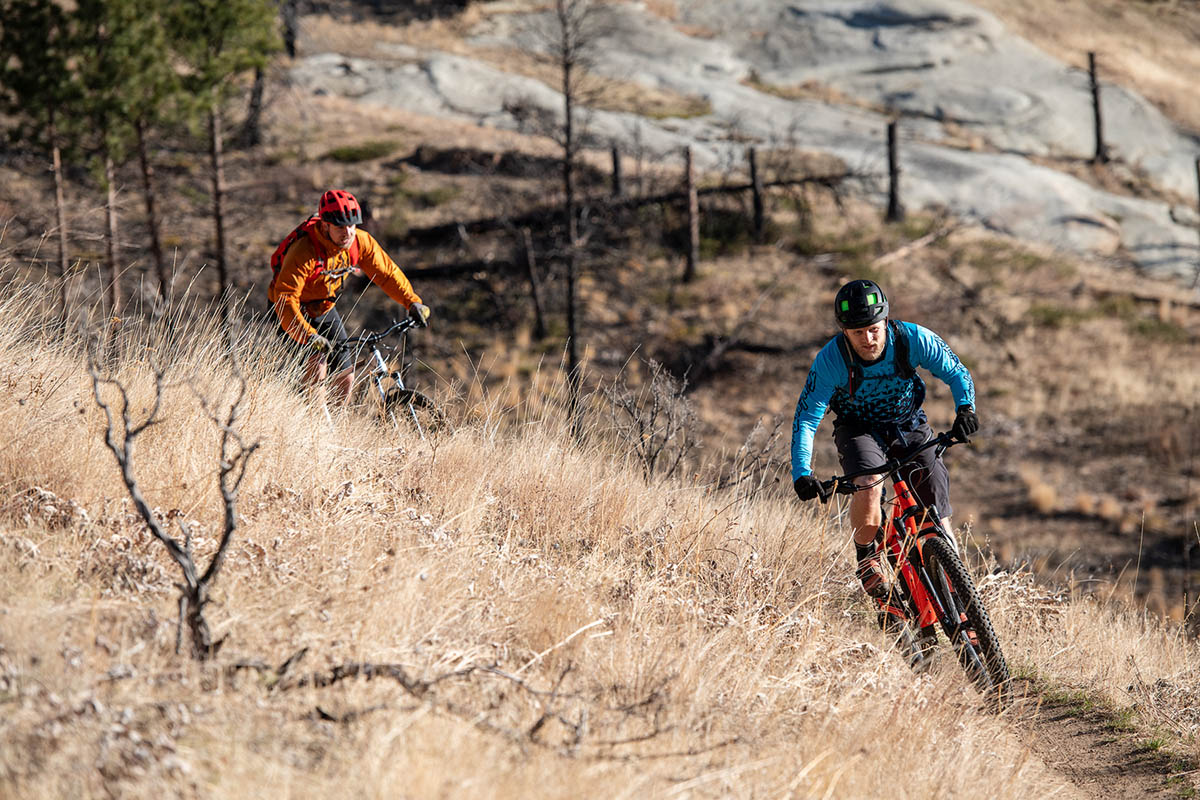

Switchback Travel (Jason Hummel)
Mountain biking can be a very expensive sport: There are hundreds of excellent bikes available for $4,000 to $6,000, and those aren’t even at the highest end of the price spectrum. Fortunately, for those of us not ready to spend so much on something without a motor, there are plenty of great bikes for under or around $2,500. And the good news is that much of the technology that has pushed the sport forward year after year has trickled down into this category. Below are our picks for 2024, which range from aggressive hardtails to all mountain-ready full-suspension workhorses. For more background information, check out our comparison table and buying advice found below the picks.
Editor’s note: We updated this guide on May 7, 2024, to amend the title, from “Best Mountain Bikes Under $2,000” to “Best Trail Mountain Bikes Under $2,500.” This reflects rising prices in the broader market and innovation that’s led to some compelling builds at more affordable prices. As a result, many of the picks below are new, although most of the brands and collections are familiar.
 Category: Full suspension
Category: Full suspension
Suspension: 140mm (front) 135mm (rear)
Tires: 27.5 x 2.6 in. (XS-S) or 29 x 2.6 in. (M-XL)
Drivetrain: Shimano SLX
What we like: You'd be hard-pressed to find better components or performance for less.
What we don’t: Consumer-direct sales make finding the perfect fit tough.
There’s no getting around it: Quality full-suspension bikes are pricey. For a budget bike in this category, you often have to make some serious sacrifices. But Polygon has put together a stellar build that's high on value with their Siskiu T8. With 140 millimeters of travel up front and 135 in the rear, a modern geometry, and a short chainstay, the Siskiu is built to handle aggressive riding on any terrain. And overall, the build is considerably more premium than what we typically see at this price point. This includes the Shimano SLX drivetrain, which is higher-quality than the equivalent parts of any other full-suspension bike on this list. Overall, if you're willing to spend into the upper end of the price range and looking to maximize bang for your buck, the Siskui handily gets our vote.
It’s true that a hardtail at the same price will be sprightlier and faster on long climbs, but the Polygon Siskiu doesn’t give up much and is far more planted over rocks and roots. Polygon is also a consumer-direct brand, which means you likely won’t have the luxury of testing your bike before your purchase—and finding the right fit is critical for comfort and long-term enjoyment on the trail. We feel the risk is worth the reward in this case, but those wanting a more readily available—but still entirely capable—option should check out the Cannondale Habit 4 below. A final note: The small and medium frame sizes come with 27.5-inch wheels, while the larger sizes are 29ers.
See the Polygon Siskiu T8
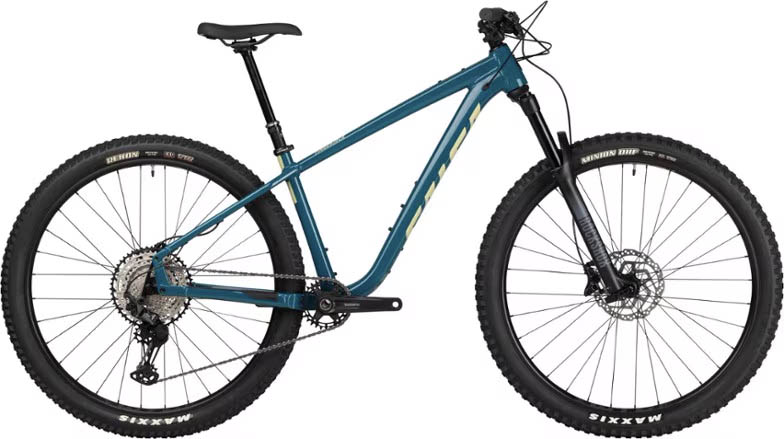 Category: Hardtail
Category: Hardtail
Suspension: 130mm (front)
Tires: 29 x 2.6 in.
Drivetrain: Shimano XT
What we like: The most capable and well-rounded hardtail on our list.
What we don’t: Still can’t match the downhill prowess of a full-suspension option.
If you’re looking for a mountain bike on a budget, options generally fall into one of two buckets: an excellent hardtail or a middle-of-the-road full-suspension bike. The Salsa Timberjack is a shining example of the latter, squeezing in just under our $2,500 price limit (note: REI currently has it listed for $2,100, which is a stellar deal). Featuring Shimano’s modern 12-speed XT drivetrain and packed with quality parts like a RockShox 35 Gold fork and a TranzX dropper post, the Timberjack checks all the boxes for most committed riders. Not to mention, it’s a seriously versatile ride that can handle everything from technical singletrack to bikepacking (as with many Salsa designs, it’s set up to be easily converted).
The Timberjack’s quality components and comfortable riding position are great for trail use and let you get pretty rowdy, but aggressive all-mountain riders will be left wanting. The 130-millimeter hardtail design just can’t keep up on downhill sections with the full-suspension Polygon Siskui above, no matter how hard you try. Should descending rough trails at speed be in your future, we think the Siskui above or Cannondale Habit below are better long-term investments. But if you want a well-equipped hardtail with no glaring needs for any upgrades in the near future, the Timberjack is a great option. For a step down in price, it’s also worth checking out Salsa’s Timberjack SLX 29 ($1,780), which features slightly downgraded components but is yet another stellar value for what you get.
See the Salsa Timberjack XT 29
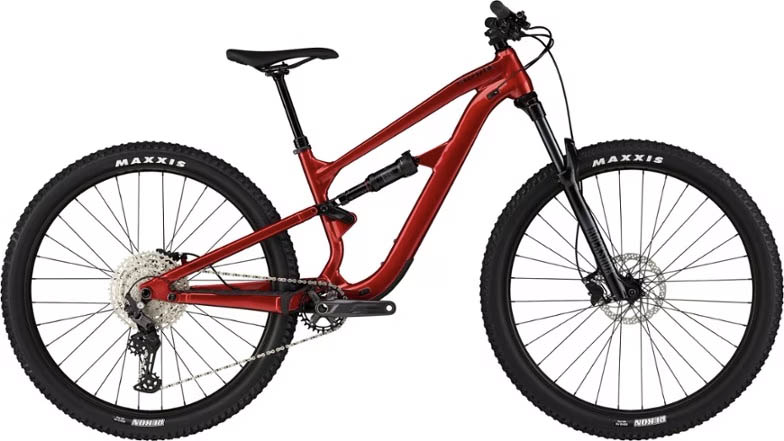 Category: Full suspension
Category: Full suspension
Suspension: 140mm (front) 130mm (rear)
Tires: 29 x 2.4 in.
Drivetrain: Shimano Deore
What we like: Sleek looks, well-rounded performance, and much more widely available than the Polygon above.
What we don’t: Slightly downgraded build compared to the Siskiu; fairly heavy.
Connecticut-based Cannondale has been in the bike business since the early 1970s and offers quality rides across all categories, from speed-focused road racers to comfortable commuters and hard chargers for cutting loose down your local singletrack. Available in three sleek colorways, their Habit 4 mountain bike strikes a hard-to-beat balance between price and performance. We tested a past version of the Habit a few years back and really enjoyed its generalist intentions: It’s a great all-rounder that can carve berms and happily chug up climbing trails and fire roads with the best of them. While entirely subjective, we also consider it one of the better-looking designs on the market thanks to the clean frame and minimalist branding.
While fairly heavy at 33.5 pounds, the Cannondale Habit 4 still climbs well and rips downhill on all but the steepest of descents. Like many competitors above and below, it also comes with a dropper post, modern geometry, and a build kit that will meet or exceed the needs of most riders, although the Deore drivetrain is a step down from the Polygon Siskiu’s Shimano SLX components. The Siksiu also boasts a burlier fork that easily justifies the extra $99, in our opinion. But the Cannondale is available through REI and many other local shops, meaning you’ll be able to try the bike out and dial in fit before making the investment.
See the Cannondale Habit 4
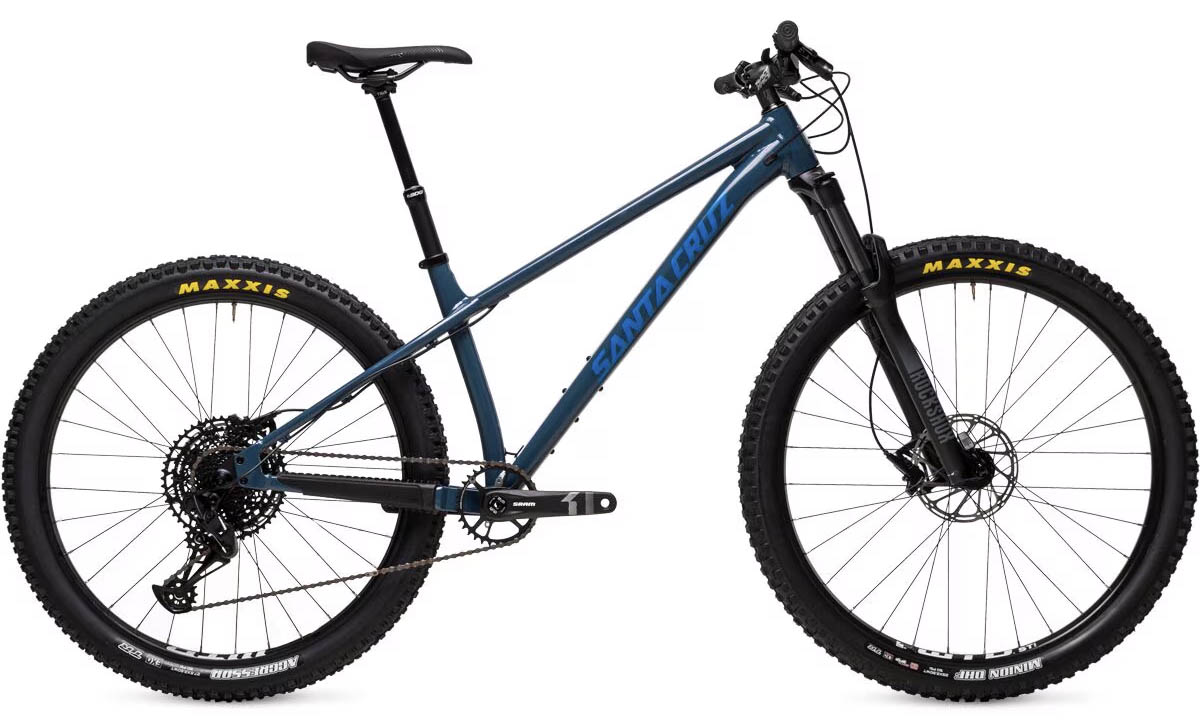 Category: Hardtail
Category: Hardtail
Suspension: 130mm (front)
Tires: 29/27.5 x 2.5 in. (MX) or 29 x 2.5 in.
Drivetrain: SRAM SX Eagle
What we like: A true all-rounder that's a blast to ride.
What we don’t: The Timberjack above is worth the extra cash, in our opinion.
Santa Cruz has been making the Chameleon since the 1990s, and the bike lives up to its name: It fits right in just about wherever you ride it, from remote dirt roads to rowdy singletrack. And despite its longstanding reputation, Santa Cruz has continued to update the bike over the years to feature thoroughly modern geometry and components. We’ve taken the Chameleon on everything from rough, steep trails to rugged gravel roads and have almost always come away with a smile on our face. The brand does have a reputation for pricing their bikes a little higher than the competition, but the Chameleon strikes us as a solid all-around value at just over $2,000—and Santa Cruz’s customer service and lifetime warranty are legendary in the industry.
Compared to the Timberjack above, the Chameleon's SRAM Eagle SX drivetrain is a step down from the Salsa’s Shimano XT (and at this price, many prefer Shimano’s Deore system, which you can get with the Kona Big Honzo DL or Norco Fluid HT 1 below). So why such the strong finish for the Timberjack on our list? In short: price, style, and fun factor. Put simply, it’s a blast to ride whether you prefer sketchy singletrack or bikepacking, and Santa Cruz makes it easy to customize the build depending on your needs and objectives. One noteworthy option is the “mullet” build,” which pairs a 29-inch tire up front (the business) with a 27.5-inch tire in the back (the party) for best-of-both-worlds performance.
See the Santa Cruz Chameleon D
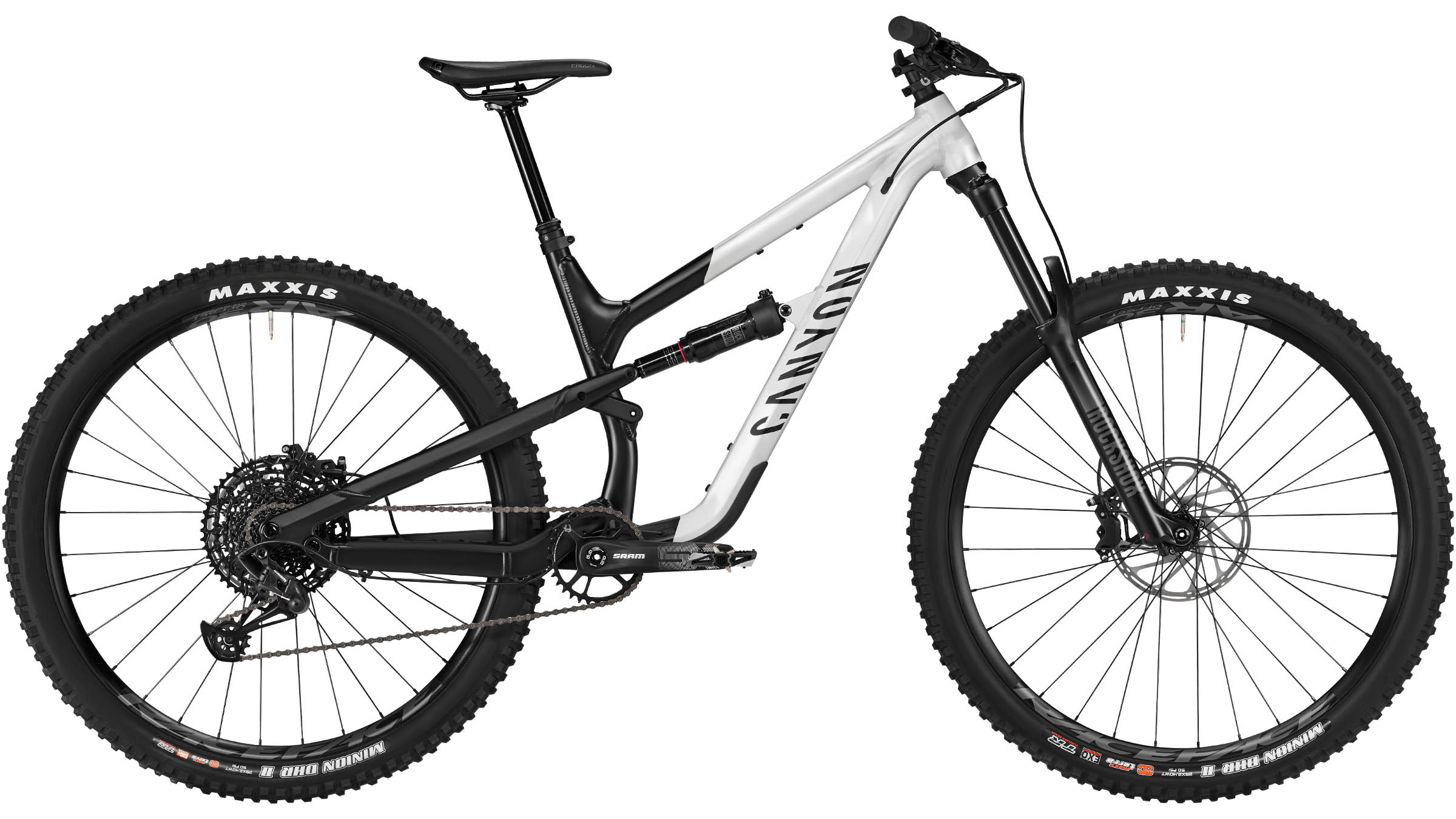 Category: Full suspension
Category: Full suspension
Suspension: 160mm (front) 150mm (rear)
Tires: 27.5 x 2.4 in. (XS-S) or 29 x 2.4 in. (M-XL)
Drivetrain: SRAM SX Eagle
What we like: Punches well above its weight on the descent.
What we don’t: Less of an uphill performer than the hardtails above.
Germany-based Canyon hit the bike scene in the mid 1980s and has been a major player in the direct-to-consumer space ever since. The Spectral 4 is our current favorite in their lineup and especially enticing for those looking to maximize downhill performance. With a generous 160 millimeters of travel and slack head tube angle, the Spectral is a boon for those who frequent rocky and rooty trails in places like the Pacific Northwest. This does result in a little less climbing efficiency, although most riders will likely find the Spectral fully sufficient even on steep ascents. And like the Polygon Siskui above, the Spectral is sold exclusively by Canyon, making it a solid value for what you get at $2,300.
In addition to being less of an all-rounder than most of the picks above, the Spectral’s components are middle-of-the road, including a fairly basic SRAM SX drivetrain. As we covered with the Siskui above, buying consumer-direct also comes with some inherent downsides, the most glaring of which is that you won't get to test the bike at your local shop before purchasing. But if value and descending capabilities are at the top of your priority list, the Spectral checks both boxes emphatically. For the same price, it’s also worth checking out Canyon’s Neuron 5, which features a more balanced geometry for long rides and steep climbs.
See the Canyon Spectral 4
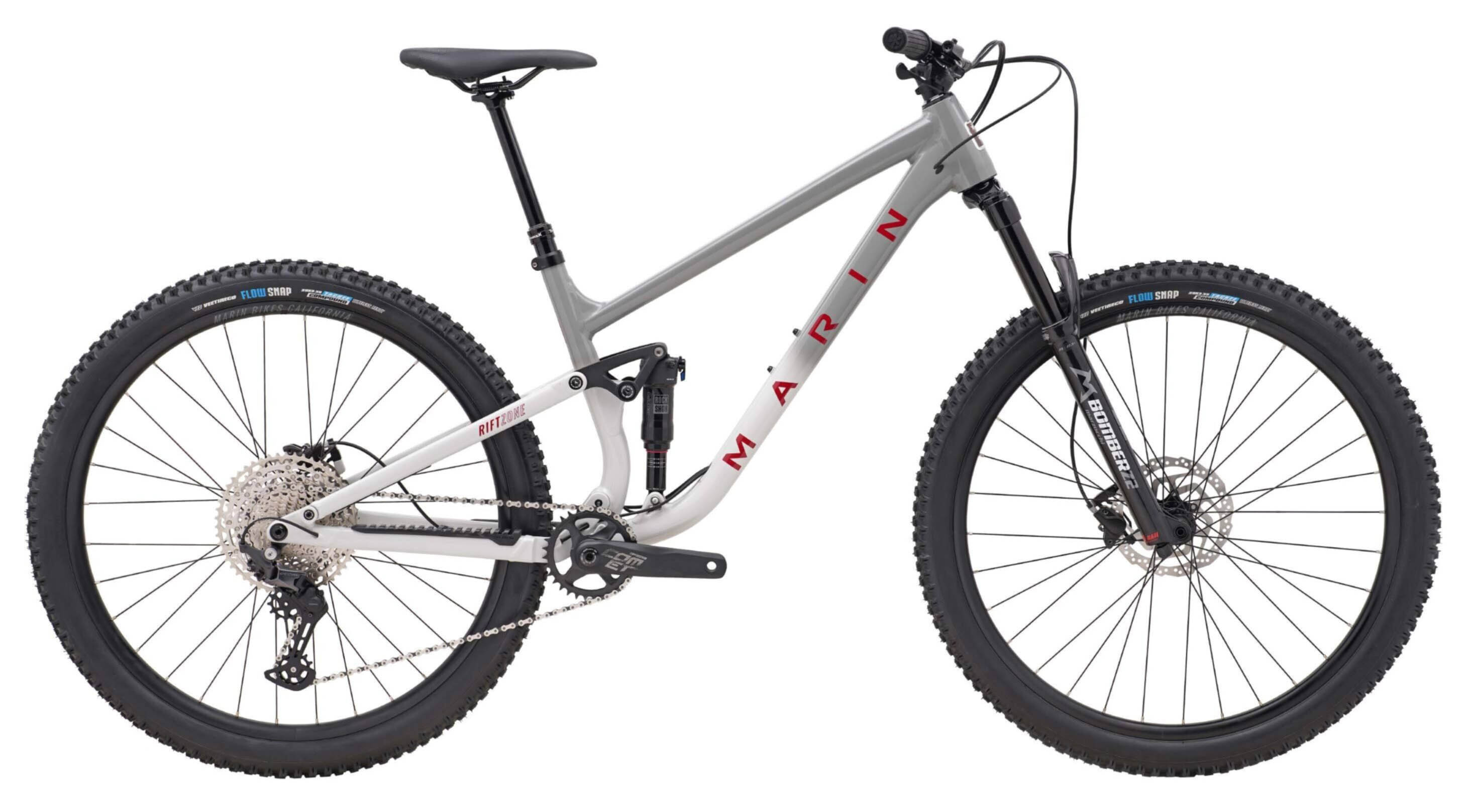 Category: Full suspension
Category: Full suspension
Suspension: 130mm (front) 130mm (rear)
Tires: 29 x 2.35 in.
Drivetrain: Shimano Deore
What we like: A terrific do-it-all build for the price.
What we don’t: A bit heavy and less playful than the Rift Zone 27.5 2.
It can be a real mixed bag in quality and performance for full-suspension bikes under $2,500, but Marin has a real winner in the Rift Zone 29 line. A sizable step up from the entry-level “1” model, the Rift Zone 29 2 nails all the right features with a sturdy and high-quality aluminum frame, modern geometry that’s slack enough for capable descending but comfortable on the climbs, and a 12-speed Shimano Deore drivetrain with a very wide range. At $2,299, the Rift Zone 29 2 adds up to a fantastic value.
With 130 millimeters of travel at both the front and rear, the Rift Zone wouldn’t be our first choice for longer cross-country rides, although it’s much more of an all-rounder than the decidedly downhill-focused Spectral 4 above. It’s also a little heavy and not the most efficient climber—a hardtail at the same price will be sprightlier and faster on long climbs. Alternatively, Marin also offers the Rift 2 27.5, which features smaller wheels for better responsiveness and maneuverability (read: It’s easier to flick around), although the 29 2 is more planted over rocks and roots. Overall, both Rift Zones are excellent values, and a final decision will come down to your preferences and riding objectives.
See the Marin Rift Zone 29 2
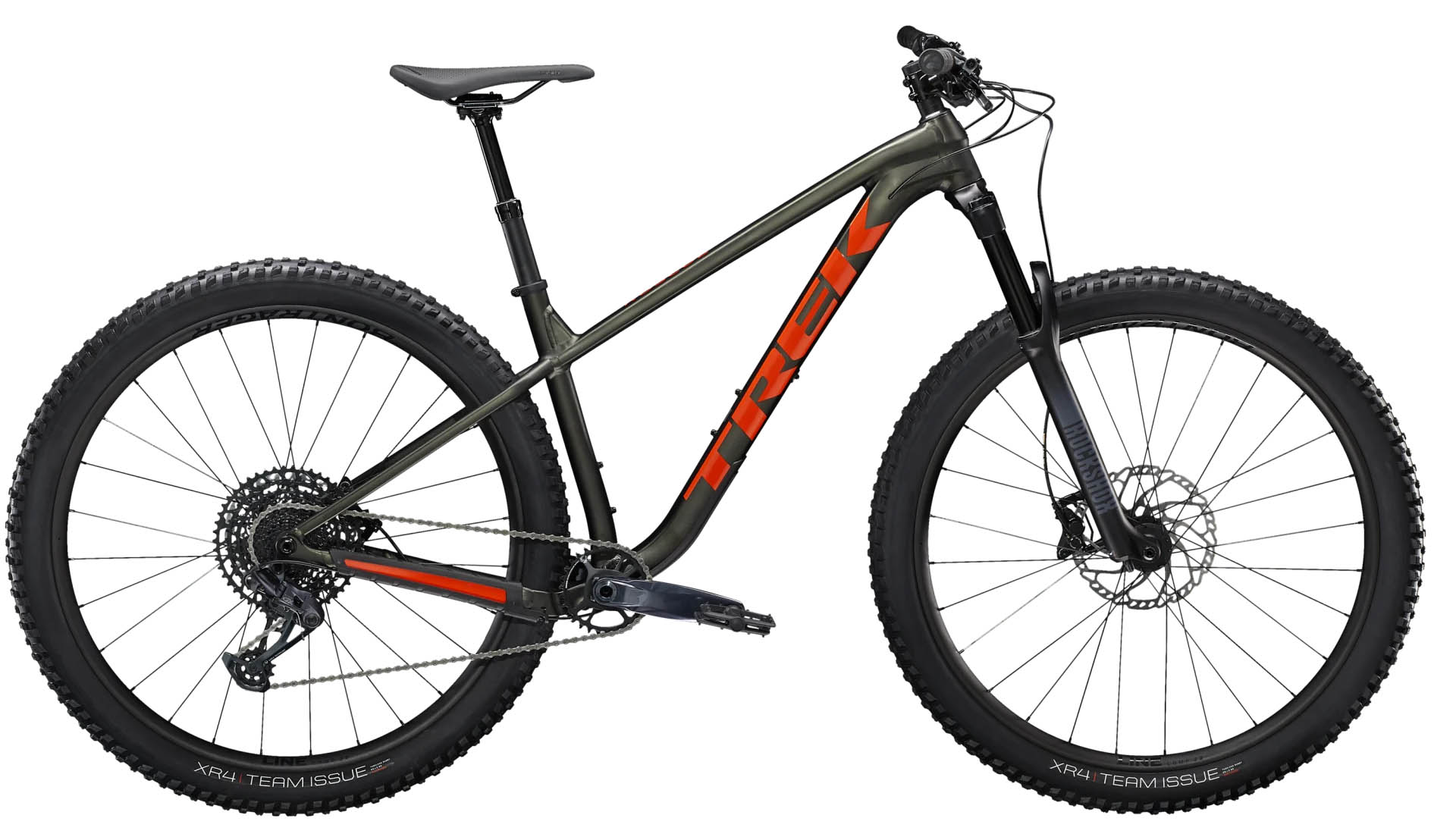 Category: Hardtail
Category: Hardtail
Suspension: 140mm (front)
Tires: 27.5 x 2.6 in. (XS) or 29 x 2.6 in. (S-XL)
Drivetrain: SRAM GX/NX Eagle
What we like: A high-quality and capable hardtail from one of the best in the business.
What we don’t: Less of a value than the Santa Cruz Chameleon D above.
One of the biggest brands in the business, Wisconsin-based Trek produces top-notch bikes across almost every price point. Their Roscoe 8 is a case in point with aggressive geometry and all-around high-quality components, including a RockShox 35 Gold front fork that’s identical to the Timberjack XT above—but with 10 millimeters more travel. Like the other hardtails on our list, the Roscoe also comes with quality disc brakes and a dropper post. In short, this bike is ready to rip whether you’re lapping your local mountain or embarking on a remove bikepacking trip. Note: Only the extra-small frame comes with 27.5-inch wheels, while all other sizes sport beefy 29-inch wheels that provide a more solid platform over rocky and rooty terrain.
Like all the hardtails on this list, the Trek Roscoe 8 is a great match for riders looking to maximize uphill performance and versatility (hardtails can be more fun and flickable, plus they make excellent bikepacking rigs). However, if you’re more interested in steep and rugged descents, there’s no substitute for a full-suspension bike. Comparing hardtails, the Trek does beat out the Santa Cruz Chameleon D above in overall quality of components (stepping up to the $2,599 Chameleon R is a different story), including its groupset and front fork. But the difference is relatively minor, and the Santa Cruz’s $300-chepaer price point is enough for us to give it the overall edge.
See the Trek Roscoe 8
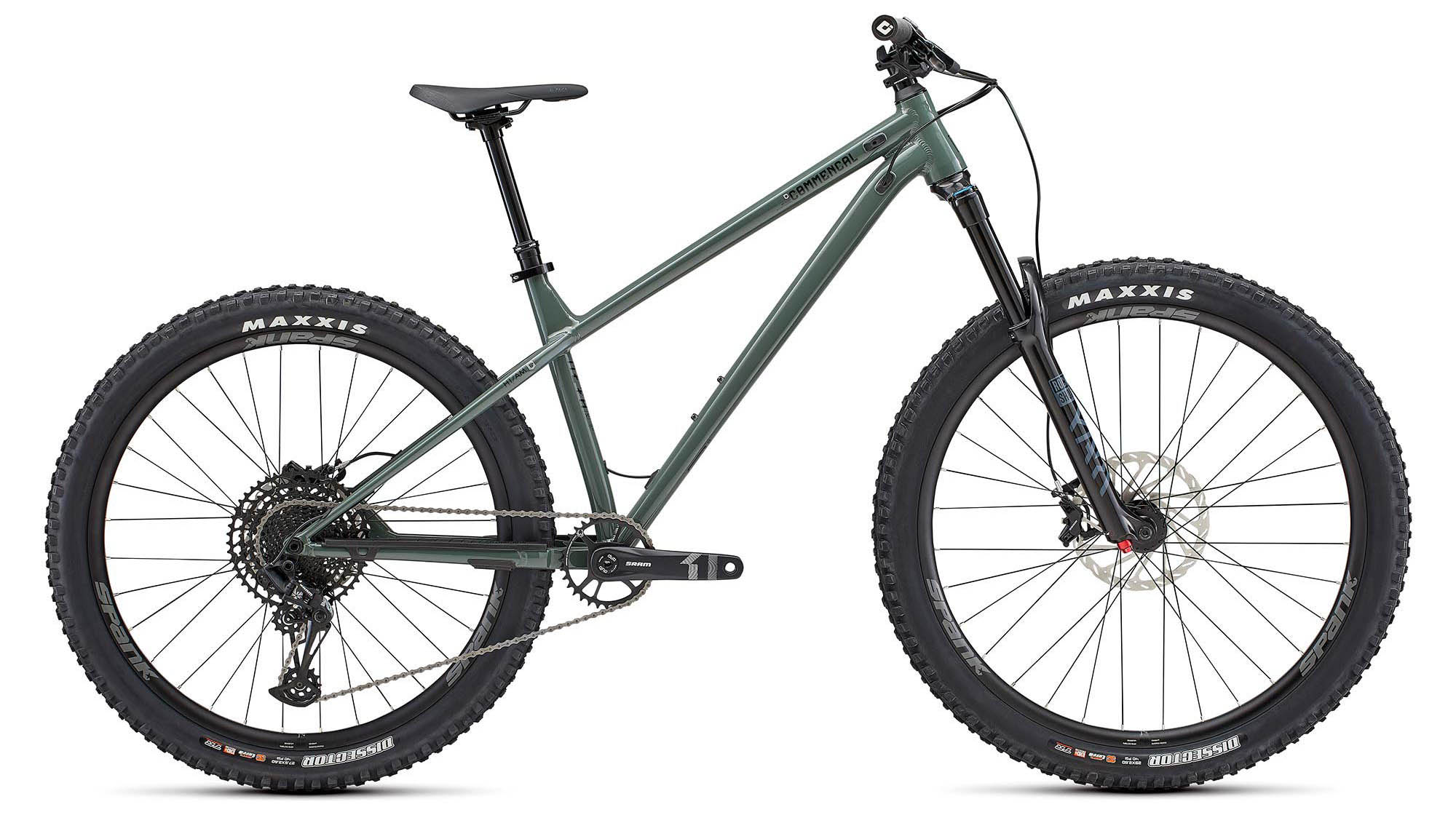 Category: Hardtail
Category: Hardtail
Suspension: 150mm (front)
Tires: 29/27.5 x 2.6 in. (S-M) or 29 x 2.6 in. (L-XL)
Drivetrain: SRAM NX Eagle
What we like: The longest-travel hardtail on our list—great for those looking for a single bike to do it all.
What we don’t: Less support and availability from a consumer-direct brand.
French direct-to-consumer brand Commencal built their Meta HT AM on the idea that it’s better to have a high-quality hardtail than a poorly performing full-suspension bike. They combined aggressive geometry (including a 64-degree head tube) with a 150 millimeter-travel RockShox fork that’s the longest-travel suspension fork on this list. Adding in burly tubeless-ready tires and SRAM’s smooth-shifting NX Eagle drivetrain makes the Meta a capable hardtail that’s ready both to climb and descend. Also of note: The small and medium frame sizes come with a “mullet” setup that includes a 29-inch wheel in the front and 27.5 in the back for a better fit and nimbler ride (large and extra-large frames come as full 29ers).
The Commencal Meta has much to offer riders looking for a quiver of one, and cutting out the middleman by ordering from a direct-to-consumer brand keeps the cost down. But ordering a bike online can also have its drawbacks. As we covered above, there’s nothing like taking a bike for a test ride before plunking down your hard-earned cash, which you won’t be able to do ordering from a direct-to-consumer brand. Commencal offers a five-year warranty, but customer service is all via phone or email, versus popping into your local shop for service. If the value of the Meta HT AM Ride is tempting but you’d prefer to shop locally, the Santa Cruz Chameleon D above also includes the option for a mullet setup—albeit with 20 millimeters less travel—and comes in around $100 cheaper to boot.
See the Commencal Meta HT AM Essential
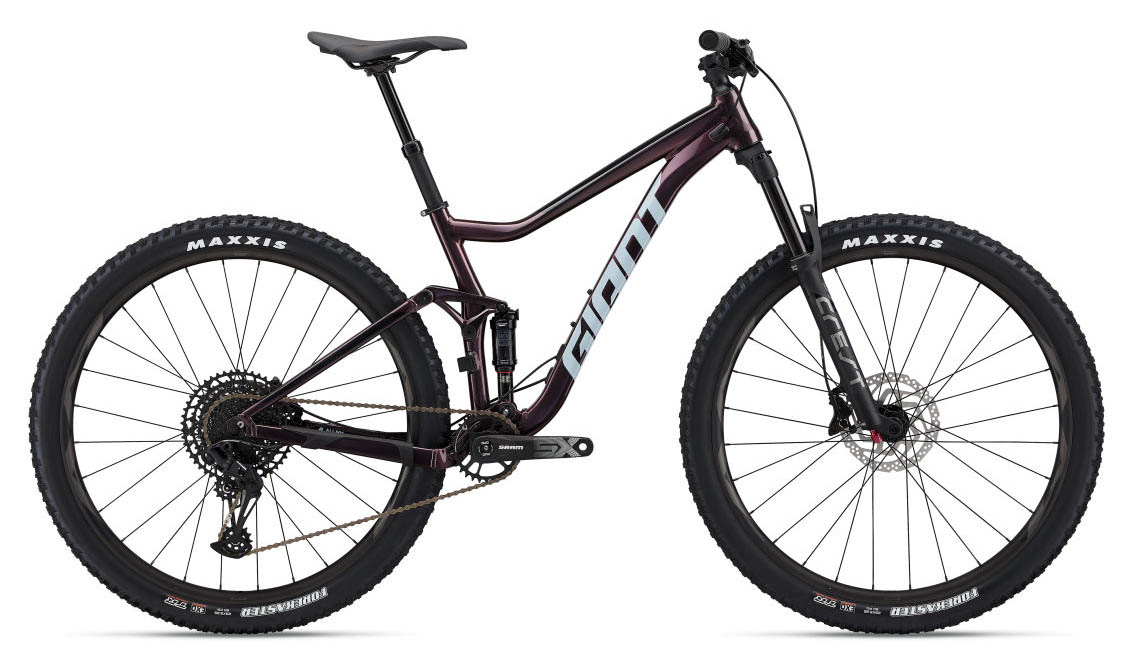 Category: Full suspension
Category: Full suspension
Suspension: 130mm (front), 120mm (rear)
Tires: 29 x 2.35 in.
Drivetrain: SRAM SX Eagle
What we like: Great price for a full-suspension bike.
What we don’t: The least travel of any full-suspension design here.
Taiwan-based Giant is the biggest bike manufacturer in the world, and we’d be remiss not to include their wallet-friendly Stance 29 1 on our list. For around $300 to $500 less than many competitors here, the full-suspension Stance features a steep head tube angle and reasonably high-quality build that will meet or exceed the needs of most casual riders. While its geometry could be seen by some as a bit dated and won’t feel super confident on steep descents, the cushioned ride is a nice consolation on mellower terrain. You also get a full 29er setup that’s stable on rougher ground, along with a relatively light but durable aluminum frame. Added up, it’s a solid deal for those looking to stay under $2,000 without giving up rear suspension.
That said, the drop in price does come with some notable performance compromises. First, the Stance 29 1 has the least travel of any full-suspension bike here, so intermediate to advanced riders who like to push their limits will almost certainly be left wanting more. Overall build quality is also a step down from many other designs here—especially if you’re willing to forgo rear suspension and opt for an ultra-capable hardtail like the $2,200 Commencal Meta HT AM Essential above. That said, price will be the clincher for some, in which case the Giant Stance is an entirely capable and well-rounded option provided you stick to flowy, less technical trails.
See the Giant Stance 29 1
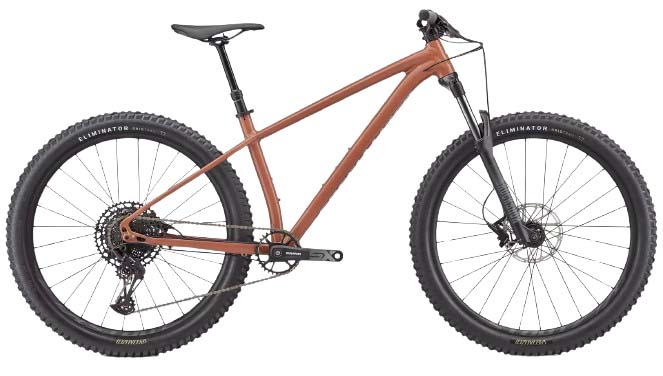 Category: Hardtail
Category: Hardtail
Suspension: 130mm (front)
Tires: 27.5 x 2.6 in.
Drivetrain: SRAM SX Eagle
What we like: Responsive, well built, and sleek appearance that belies its price tag.
What we don’t: Only available with 27.5-inch tires; not the best value.
Specialized is credited with making the first mass-produced mountain bike, the Stumpjumper, back in the early 1980s and has been honing their craft ever since. Among their healthy selection of sub-$2,500 offerings, we like the sturdy but responsive Fuse Sport 27.5 best. With a relatively slack head tube angle (66 degrees) and 27.5-inch tires, the Fuse Sport offers a nice balance between high-speed stability and responsiveness. It’s also well built with quality components that beat out just about all of the full-suspension options on our list (again, if you’re looking to maximize bang for your buck, a hardtail is the way to go). Finally, while entirely subjective, we love the Fuse Sport’s sleek, clean frame and availability in two classy colorways (we especially like the Gloss Terra Cotta/Arctic Blue shown in the photo to the right).
Our biggest gripe is that the Fuse Sport is only available with 27.5-inch tires. Everyone is different, but many hardtail riders prefer the ruggedness and rollover capability of a 29er. However, if you’re looking to get a little rowdy and don’t mind the trade-offs in stability, a 27.5 setup certainly has its advantages, including better pedaling efficiency on the uphills and quicker responsiveness to input. Smaller riders will also likely find it provides a better overall fit and feel. Value-wise, you can get the same SRAM SX drivetrain with the $300-cheaper Chameleon above, and alternatives like the $2,399 Trek Roscoe 8 and $2,499 Salsa Timberjack XT 29 are overall better values in the hardtail market with upgraded components. The relative lack of versatility and value push the Fuse Sport down toward the bottom of our list, but it’s nevertheless a capable, well-built, and good-looking hardtail for the price.
See the Specialized Fuse Sport 27.5
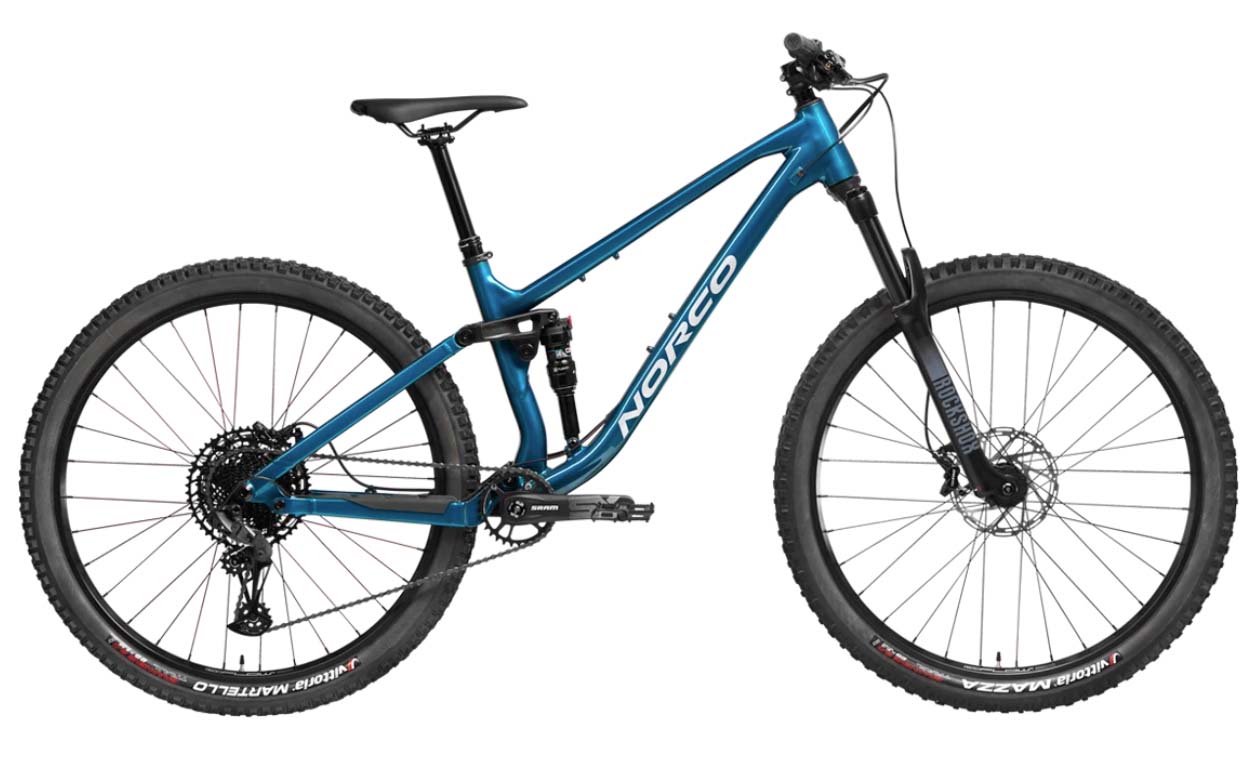 Category: Full suspension
Category: Full suspension
Suspension: 140mm (front), 130mm (rear)
Tires: 29 x 2.4/2.35 in.
Drivetrain: SRAM SX Eagle
What we like: Quality build featuring Norco’s trademark customizability.
What we don’t: You can get a better front fork and drivetrain for less.
Based out of British Columbia, Norco is no stranger to technical singletrack and aggressive backwoods terrain. Part of their extensive Fluid collection, the Fluid FS A3 is at the very upper end of our $2,500 price limit but doesn’t skimp on quality details and well-rounded performance. As expected for the price, the Fluid features a high-quality aluminum frame, modern geometry, a dropper post, hydraulic disc brakes, and tubeless-ready tires. Norco also offers a limited lifetime warranty on the frame and a two-year warranty on the bike’s full-suspension hardware, both of which are very competitive in the market (not to mention a solid dealer network throughout the U.S.). And we’d be remiss not to mention their Ride Aligned program, which helps riders dial in a customized setup based on fit and terrain preferences.
The Norco Fluid FS A3 doesn’t knock it out of the park in every department, though. For $200 less, Canyon’s Spectral 4 above offers a very similar front fork and drivetrain—both of which are somewhat middling but perfectly serviceable for most riders—along with additional travel at both the front and rear (160 and 150mm respectively). And for $100 less than the Norco, Polygon offers big component improvements with the top-rated Siskiu T8, including an upgraded SLX drivetrain. Finally, we think there are better-looking options available, including both of the aforementioned alternatives as well as Cannondale’s $200-cheaper Habit 4. But if you don’t mind spending up, the Fluid nevertheless is an excellent and fun setup that will handily exceed the needs of most recreational riders.
See the Norco Fluid FS A3
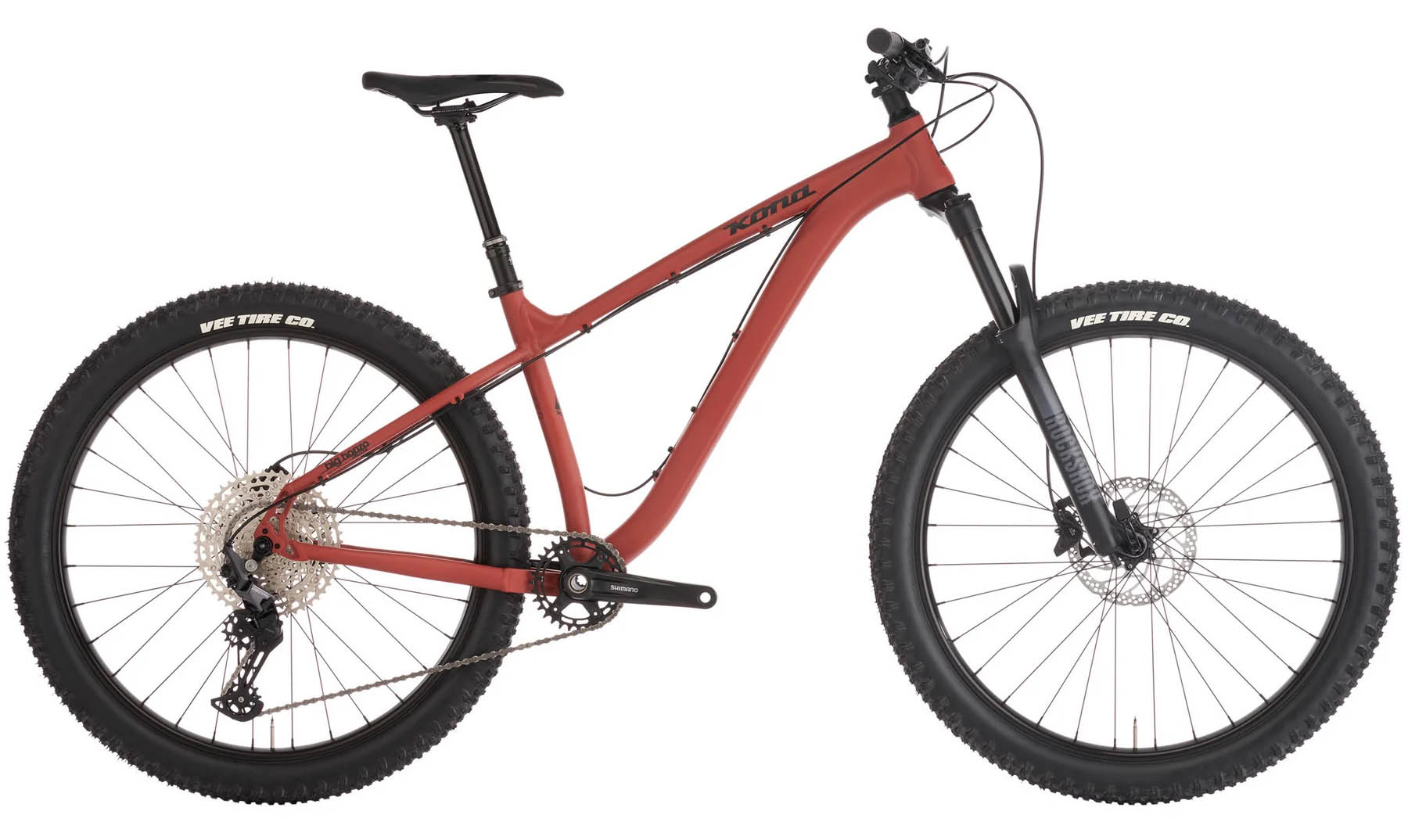 Category: Hardtail
Category: Hardtail
Suspension: 130mm (front)
Tires: 27.5 x 2.8 in.
Drivetrain: Shimano Deore
What we like: Beefy tires help bolster the bike on bumpy downhills.
What we don’t: The Fuse Sport above is the more competitive all-around design.
Founded in 1988 in Vancouver, Kona has always been more about fun than anything else, and their Honzo DL clearly illustrates that ethos. Compared to the 29ers above, the Honzo’s 27.5-inch wheels offer a quicker and sprightlier feel on both the ups and downs, with the biggest compromise being traction. Kona attempted to bridge that gap with beefy, 2.8-inch tires that can absorb rocks and roots more readily. The net result is a well-balanced design that’s both easy to maneuver and stable on challenging terrain. For new and casual riders looking for a best-of-both worlds compromise, the Honzo pulls it off pretty well.
Why the last-place finish for the Kona Big Honzo DL? It largely comes down to components: While a significant $400 less than the similarly built Specialized Fuse Sport 27.5 above, the Honzo is a notable step down in build quality, including a downgraded drivetrain and—in our opinion—fairly bland exterior. The latter complaint is purely personal preference, however, and the Kona’s beefy tires and otherwise well-rounded build earn it a spot on our list this season. Editor’s note: The Honzo DL is sold out on Kona’s website at the time of publishing, but we confirmed that more stock is expected by the end of August. In the meantime, it’s worth checking with your local bike shops to see if they carry the Honzo (or any of Kona’s myriad other sub-$2,500 hardtails).
See the Kona Big Honzo DL
| Bike | Price | Type | Suspension | Tires (in.) | Drivetrain |
|---|---|---|---|---|---|
| Polygon Siskiu T8 | $2,399 | FS | 140mm (front) 135mm (rear) | 27.5 x 2.6 or 29 x 2.6 | Shimano SLX |
| Salsa Timberjack XT 29 | $2,499 | Hardtail | 130mm (front) | 29 x 2.6 | Shimano XT |
| Cannondale Habit 4 | $2,300 | FS | 140mm (front) 130mm (rear) | 29 x 2.4 | Shimano Deore |
| Santa Cruz Chameleon | $2,099 | Hardtail | 130mm (front) | 29/27.5 x 2.5 or 29 x 2.5 | SRAM SX |
| Canyon Spectral 4 | $2,299 | FS | 160mm (front) 150mm (rear) | 27.5 x 2.4 or 29 x 2.4 | SRAM SX |
| Marin Rift Zone 29 2 | $2,299 | FS | 130mm (front) 130mm (rear) | 29 x 2.35 | Shimano Deore |
| Trek Roscoe 8 | $2,400 | Hardtail | 140mm (front) | 27.5 x 2.6 or 29 x 2.6 | SRAM GX/NX |
| Commencal Meta | $2,200 | Hardtail | 150mm (front) | 29/27.5 x 2.6 or 29 x 2.6 | SRAM NX |
| Giant Stance 29 1 | $1,850 | FS | 130mm (front), 120mm (rear) | 29 x 2.35 | SRAM SX |
| Specialized Fuse Sport | $2,400 | Hardtail | 130mm (front) | 27.5 x 2.6 | SRAM SX |
| Norco Fluid FS A3 | $2,499 | FS | 140mm (front) 130mm (rear) | 29 x 2.4/2.35 | SRAM SX |
| Kona Big Honzo DL | $1,999 | Hardtail | 130mm (front) | 27.5 x 2.8 | Shimano Deore |
From technical singletrack to remote backcountry bikepacking, many of us at Switchback Travel regularly hit the trails on two wheels. Former editor-in-chief John Ellings put together our initial list of seven sub-$2,000 bikes in 2015. Based in eastern Washington state, John lives in a mountain biking mecca and takes advantage any time he can—including frequent midday “lunch laps.” Contributing editor Nick Mott took over the guide in 2024. Also an avid mountain biker, Nick is spoiled by the plethora of long, steep, rowdy climbs and remote singletrack near his home in southwest Montana.
To dial in our list of 12 capable trail bikes above, we drew from our extensive experiences testing different designs on all manner of terrain—from long, rolling rides to technical trails across the U.S. and British Columbia (where two of our most fervent testers are based). We also garnered feedback from our bike-savvy contributors and the online mountain bike community. In addition to price, we prioritized bikes with modern geometry and high-quality components, and factors like brand reputation and quality of customer service also played a role in determining our favorites. As the mountain bike market continues to evolve, we will update the list above to reflect the latest and greatest designs under $2,500. For those on a tighter budget, we took a similar approach to compile our list of the best mountain bikes under $1,500.
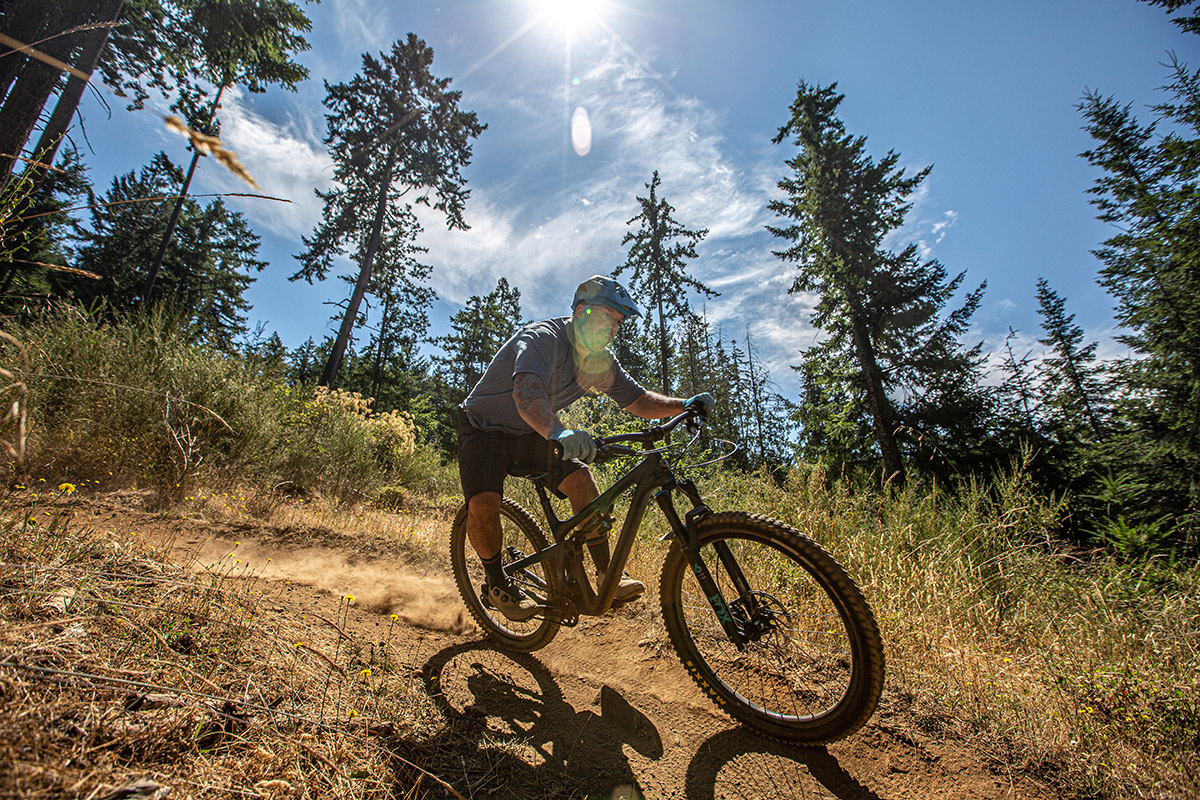
Mountain bikes come in a variety of specialties: Cross-country (XC) bikes, for example, are built for long, light, and fast expeditions over relatively mellow terrain. Downhill bikes are heavy, feature beefy suspension, and are built to charge down steep and rugged trails. Fat bikes live up to their name with thick wheels that are geared for stability and traction on sand and snow. These are all great options if you’re specializing in any one terrain type, but most riders—and especially beginners and intermediates looking for mid-range designs like those above—are in the market for an all-rounder trail bike. While typically not the best in any one performance category, trail bikes are well-rounded options that excel for both climbing and descending. They can rock rooty descents, power over long, rolling, singletrack, and roll up remote, rugged climbs. We’ve further divided our selection into full-suspension offerings and hardtails, which we break down below.
.jpg)
In the $1,500 to $2,500 range, you’ll find yourself weighing several options, the most significant of which might be rear suspension. As their names suggest, full-suspension bikes feature squish at both the front and rear of the bike, while hardtails only include suspension in the front fork. One major factor to consider is where you typically ride: When the trails aren’t particularly rough, rear suspension isn’t necessary, and a lightweight hardtail can be more fun and flickable. They're arguably more versatile, too, including better efficiency on climbs and the ability to haul gear on bikepacking trips. That said, on rugged terrain—like the rock- and root-filled Pacific Northwest—there's simply no substitute for a full-suspension bike.
Designing and building a rear suspension is a very complex, lengthy, and expensive process—not to mention the cost of the shock itself. As a result, you’ll see notable component upgrades on hardtails—particularly shifters, brakes, and the front suspension fork. In sum, if you can do without a rear shock, you’ll be getting more bike for your money. Here, bikes like the Salsa Timberjack and Santa Cruz Chameleon really stand out: These capable hardtails can keep a similar pace with full-suspension models on many smoother trails, are a riot to ride, and are a breeze to maintain. All that being said, for folks who want a single bike to get them through the toughest terrain, it's hard to beat a quality full-suspension design.
.jpg)
29er
You’ll hear the term “rollover” used a lot in describing a 29er, and it’s a fair point. The larger wheels have a more favorable angle of attack and aren’t as affected by rocks and roots as a smaller wheel, which in turn lends to a more solid platform. This comes at the sacrifice of some quickness and playfulness on tight and twisty trails. Furthermore, wheelsets are heavier in this entry/mid-level category, and a 29er’s greater "wheel" estate translates to extra heft to drag up a long climb. A $2,500 29er is less of a grin-maker than a comparable 27.5 bike (or the old 26-inch), but it is a stable companion that allows a hardtail like the Salsa Timberjack to outperform expectations when the going gets rough. It’s also worth noting that many of the options above—including the Polygon Siskiu T8 and Canyon Spectral 4—offer both 27.5- and 29-inch setups depending on frame size.
.jpg)
27.5 (or 650b)
Riders looking for a playful bike that is easy to maneuver and responds eagerly to quick inputs will likely prefer the 27.5-inch wheel design. Also known as 650b, this wheel size is less cumbersome on tight trails than a comparable 29er, and smaller riders will find it often provides a better overall fit and feel. You will give up a bit in terms of pedaling efficiency and grip, and nothing can match the confidence-inspiring rollover of a 29er. But for uphill or fun-focused riders, a bike like the Specialized Fuse Sport is lighter on climbs, easy to flick around, and delivers better acceleration too (for more, see our article on 27.5 vs. 29er mountain bikes).
27.5 Plus (Mid-Fat)
First there was the 29er, then came the 27.5, and now we have the 27.5 Plus. The first two refer simply to wheel diameter, while the final one tacks on an indicator of tire width. These tires are referred to as mid-fat or “plus” and fall in between the standard 2- to 2.5-inch mountain bike tires and the true 5-inchers that you find on a fat bike. The benefits of a wider tire include increased stability, greater trail comfort, and traction. Obviously with more rubber comes more weight, and mid-range bikes that are already a little heavy can feel even more ponderous with plus tires. But done right, as is the case with Kona’s stellar hardtail, the Big Honzo DL, the 2.8-inch-wide tires do wonders for grip with few negatives.
.jpg)
Mullet
There's a relatively new fad sweeping the bike world, which is riding with a 29-inch front tire and a 27.5-inch rear tire. Aptly dubbed a “mullet,” it’s as polarizing a design as the ‘70s hairstyle. But in theory, you’re getting the best of both worlds, including the workhorse capability of a 29er combined with the playfulness of a 27.5-inch setup. Climbing can take some getting used to, but fast, downhill cornering is a blast. Many bikers prefer the predictability of a more traditional setup, but the added playfulness and versatility can be a boon for the right rider. From the options above, the Santa Cruz Chameleon and Commencal Meta HT AM Essential are standouts in this category.
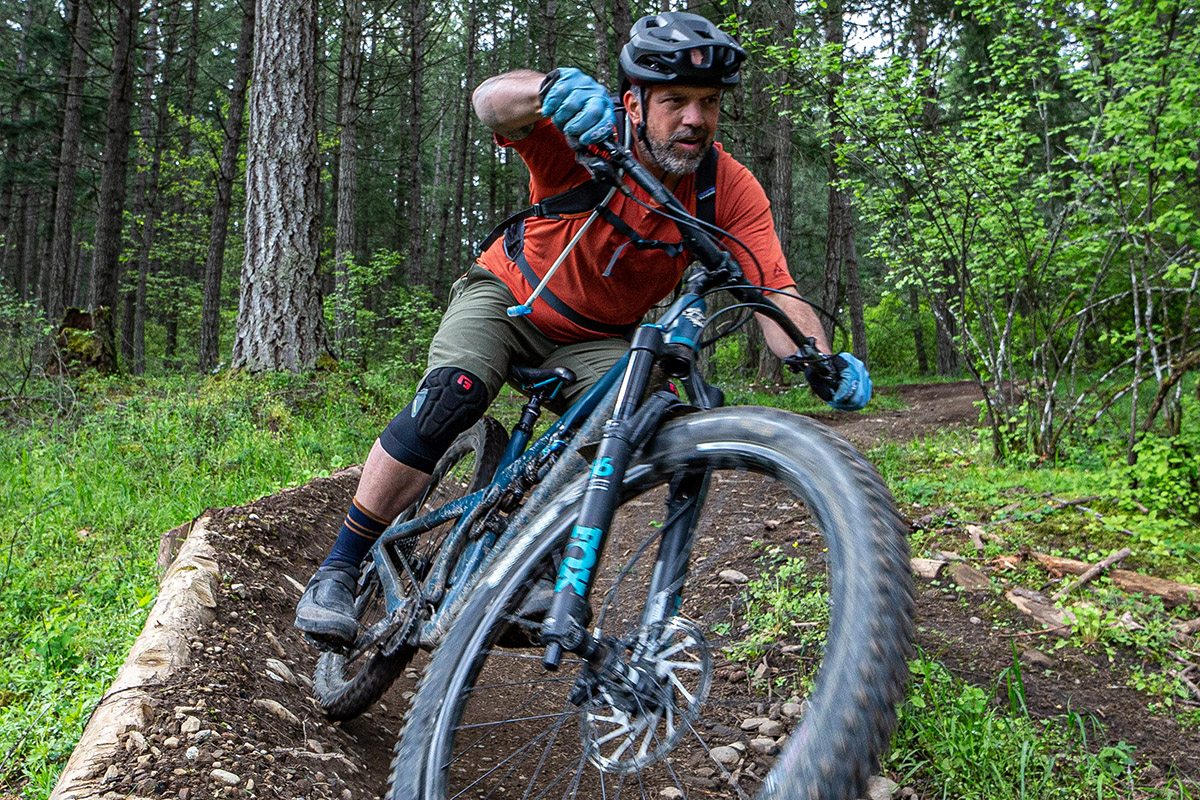
At first glance, it may appear that having more gears is a good thing—20 is better than 12, right? But that 20-gear (2x10 crankset) ride can actually be more cumbersome to use. On the trail, you need crisp changes to react to rapid ascents and descents, and swapping from the big to small chain ring in the front is a real time-killer—not to mention it means excess weight and complexity. All of the bikes here have a 1 x 12 drivetrain, which hits a real sweet spot at this price point with enough range to handle the ups and downs of most trail riding. The majority feature SRAM's or Shimano's entry-level—but still high-quality—SX and Deore drivetrains, while our top models—like the Salsa Timberjack XT—feature upgraded systems.
.jpg)
Weight is an unfortunate area of sacrifice at the sub-$2,500 price point. All of the fancy technology and materials that drive mountain bike weights lower and lower have a significantly higher cost of entry. For most casual riders, it’s less of an issue, but if your trails involve extended climbs up fire roads or singletrack, the excess weight can be a factor. If shaving weight is one of your top priorities and you’re trying to stick to a budget, a hardtail is your best choice. In terms of components, these bikes consistently do better at managing their heft simply because there’s more leftover cash in the design budget when you don’t have to include a pricey rear shock and linkage.
Another way to trim weight from your bike is transitioning to a tubeless setup. Removing the tubes on your tires cuts away that all-important rotational weight and can be done quite inexpensively. Further, you can run at a lower PSI, which increases traction and comfort without the fear of flatting. All of the bikes on this list have tubeless-ready tires, but you should still verify that your rims are compatible. It’s also possible to set up a standard rim tubeless, but the process can be a little arduous the first few times.
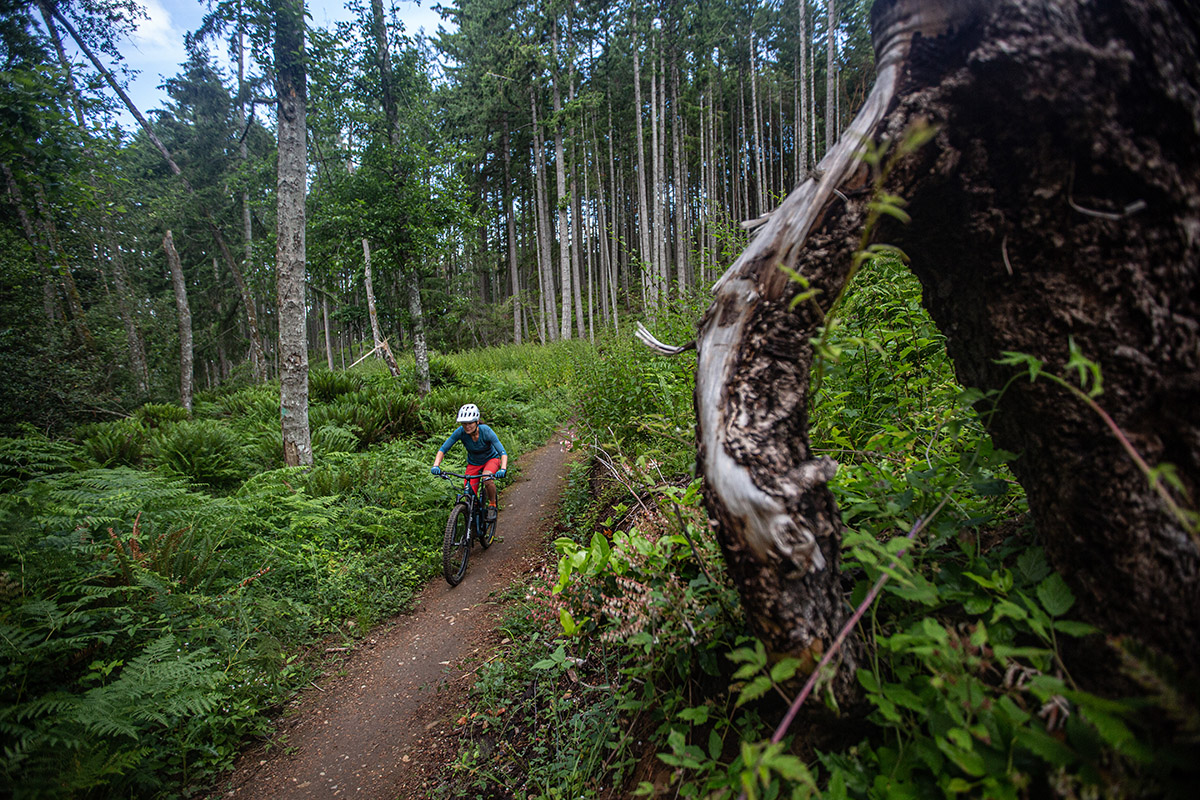
Carbon fiber bikes are not new to the world of cycling, but they are certainly popular and often the center of attention on group rides. So what’s all the hoopla about? Carbon bikes are almost always lighter than their aluminum-frame counterparts, sometimes shaving up to 2 pounds. While most beginner riders probably won’t notice much of a difference, those racing the clock will certainly enjoy the decrease in weight. And carbon fiber is actually known to be stiffer than aluminum, which is a boon for efficiently transferring power. Finally, their lack of welds and smooth shapes give these bikes a premium, sleek look.
This boutique material is not without its downsides, however, and often costs hundreds, if not thousands, more than an equivalently spec’d aluminum counterpart. Prepare to get a lot less bike for your money should you go this route (there's a reason no carbon bikes made our list). Carbon frames are also said to be more susceptible to impending rock strikes and hits, something that aluminum can shrug off in most cases. And one of the biggest downsides of carbon fiber is that it is not easy to recycle, which is a positive upside for old aluminum bikes. All in all, if you prioritize quality components over a light frame and want to keep your price point under $2,500, we think aluminum is the way to go.
.jpg)
There’s a good chance that you do a lot of your shopping online, so why not do the same when you’re ready to pull the trigger on a new bike? More and more companies are offering online checkout options along with hard-to-beat deals—and consumer-direct brands like Polygon, Commencal, and Canyon have flourished in recent years. But before you skip the in-store experience, there are a few questions you should ask yourself. Are you comfortable with minor bicycle assembly and adjustments? Do you know which size you need or what geometry feels most comfortable? Will someone be home to receive the delivery of your expensive new ride?
A properly fitting bike is imperative for two-wheel enjoyment, and the thought of buying a rig without being able to throw a leg over it first may seem daunting for some. Luckily, almost all brands and online retailers provide an easy-to-follow size guide for their bikes. Simply locate your height on the chart and see which size it corresponds to. If you’d like to take it one step further, dive into the geometry chart, which shows frame dimensions for each size and can help you fine-tune your search. And if that isn’t enough for you, Competitive Cyclist has a comprehensive fit calculator that should more than satisfy the most discerning riders. While nothing beats seeing a bike in person, there are many sizing tools available online to meet most riders’ needs.
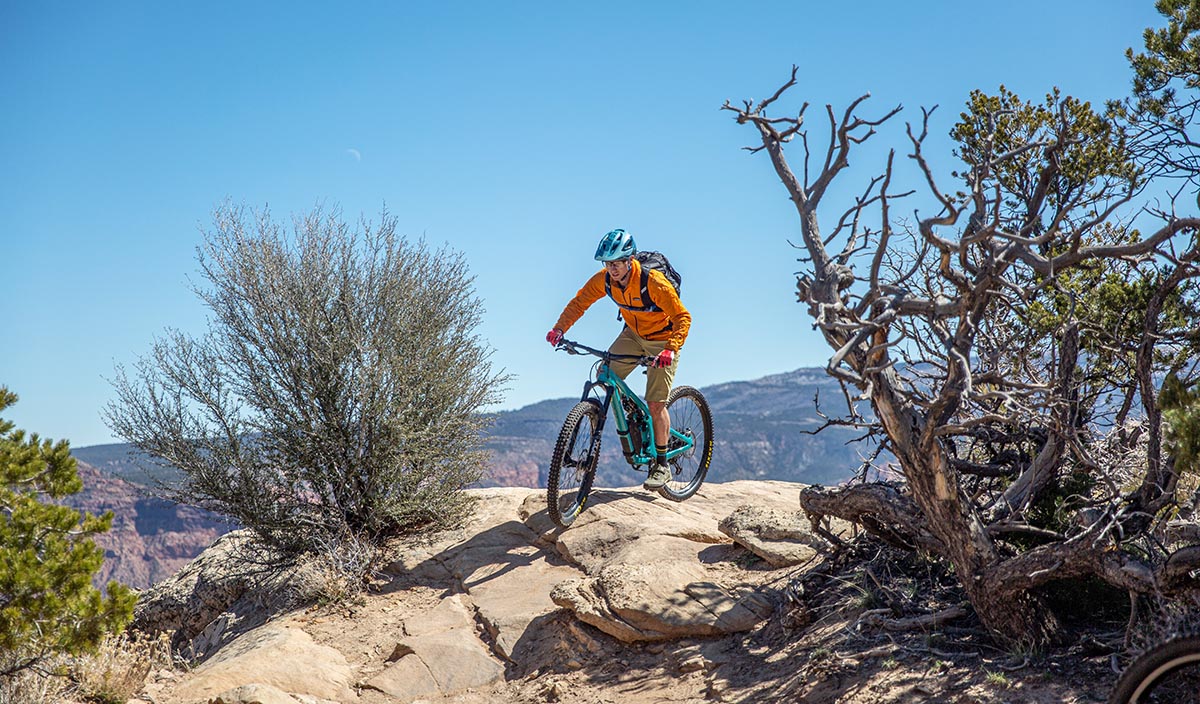
The majority of shipped bikes require some sort of assembly, so it’s important to have a working knowledge of how they are put together. In the most basic situation, you’ll need to install the front wheel and pedals of a shipped bike. This sounds easy in theory—and it often is—but wheels can sometimes be tricky to line up correctly and pedals have reverse threads, which can be confusing for first-timers. At the other end of the spectrum, you may be required to cut the fork’s steerer tube, install the bottom bracket, and route cables through the frame—all of which require special tools and mechanical know-how. Online programs like Diamondback’s Ready Ride provide great bike-building tutorials, and if all else fails, your local bike shop will happily assemble your bike and fix any, or all, of your mistakes. This in-person service does not come cheap, ranging from around $75-$150, but knowing your bike was properly and professionally assembled will ease your mind when bombing down sketchy single track.
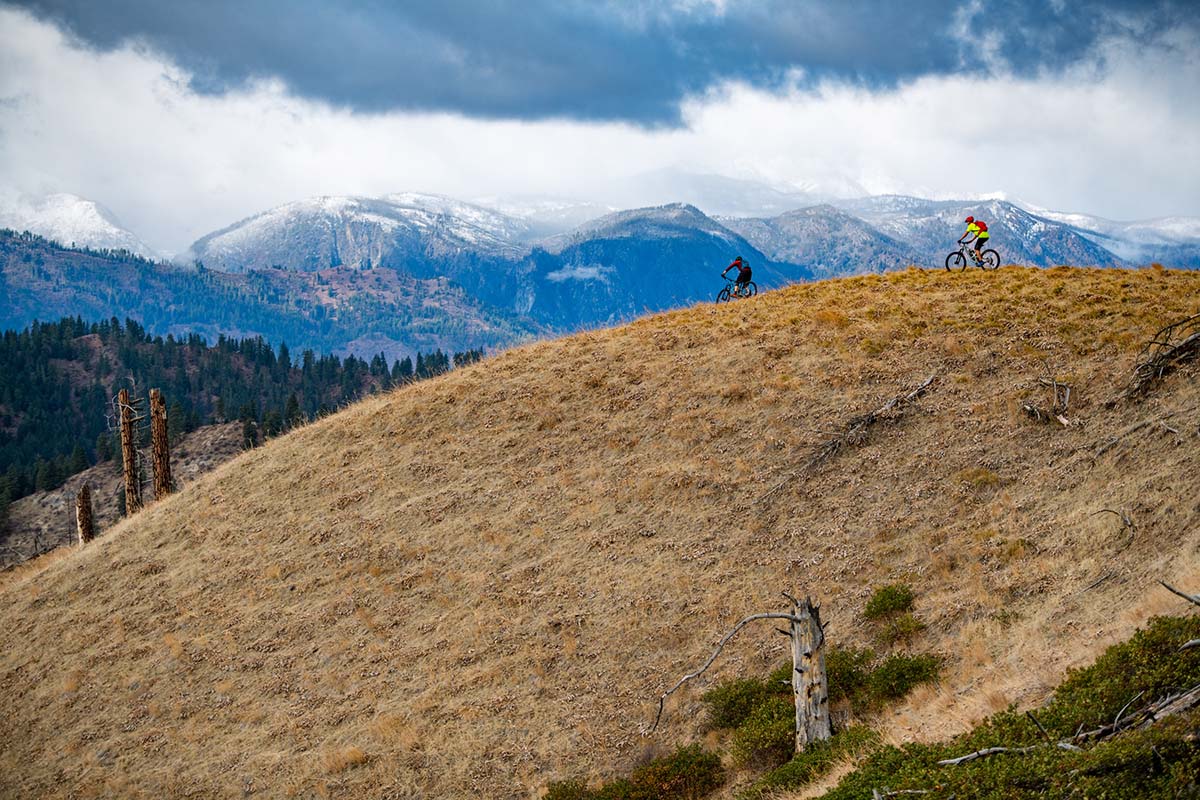
Consumer-direct brands like Canyon, Polygon, and Commencal have been gaining a lot of momentum in the U.S. market over the past several years. The reason: Compared with traditional brands that work through brick-and-mortar bike shops, these online-only companies offer better bang for your buck. As an example, the top-ranked Polygon Siskiu T8 above ($2,400) and Santa Cruz’s Tallboy D (well outside the cap of our price range for this lineup) go toe-to-toe with their aluminum frames, 29-inch wheels, and mid-tier drivetrain and suspension components. But with a huge difference in price and fairly similar on-trail performance (the Tallboy is arguably slightly more refined), the Polygon makes a very strong case for itself. And similar comparisons can be drawn with Commencal’s hardtails and Canyon’s array of gravel, road, and MTB offerings.
There’s no denying the fact that consumer-direct companies sell their bikes at enticing prices, but is it too good to be true? You’ve likely heard some horror stories about poor customer support, long wait times, and lack of inventory altogether. Plus, there’s a good chance you won’t be able to give the bike a test ride prior to purchasing. And finally, there’s something to be said for supporting your local bike shop. However, if you’re simply looking for the best value bike on the market—and aren’t too risk-averse to the potential downsides—it’s hard to ignore consumer-direct companies.

Buying a used bike is a great way to cut down on waste and extend the life of a product, but there are a number of things you should consider before going down that path. The main appeal to buying used is saving money, but unmaintained bikes may end up costing you a lot in future repairs (and you won’t be able to utilize the manufacturer warranty in most cases). It’s important to check the drivetrain for wear: Specifically, are the chainring teeth shaped like shark fins (as opposed to triangles), or missing altogether? If so, then those need to be replaced. How many miles does the chain have on it? Use a chain checker tool to see if it’s worn out. It’s also important to closely inspect the bike frame for cracks or major dents—if either are present, we recommend moving on.
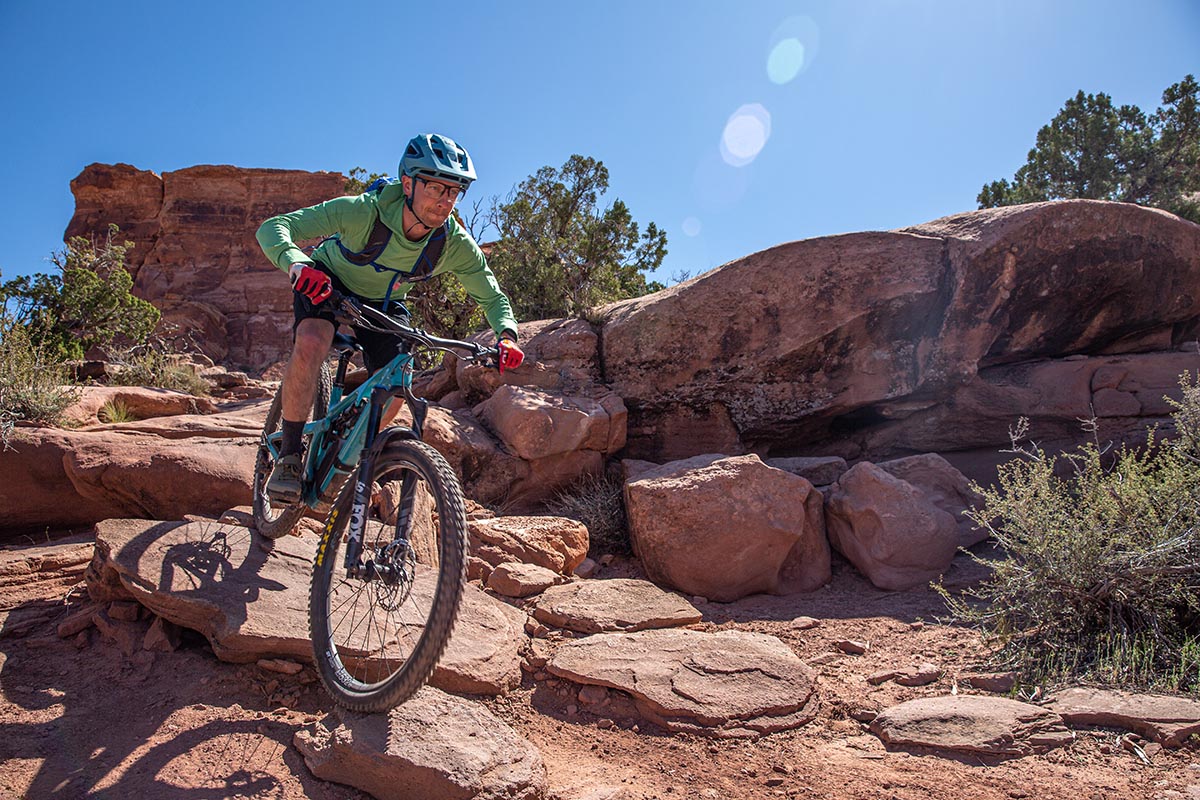
Similar to buying a pre-owned car, the best way to ensure you're purchasing a quality used bike is to have a shop check it out. We recommend calling ahead of time and asking if a bike technician can take a few minutes to go over the bike. When you’re spending hundreds (or thousands) of dollars, we think it’s worth the time and hassle for a professional opinion. All in all, buying used can be a great way to get a quality bike at half the original price, but just be aware of the possible risks that are involved.
Back to Our Top Mountain Bike Picks Back to Our Mountain Bike Comparison Table